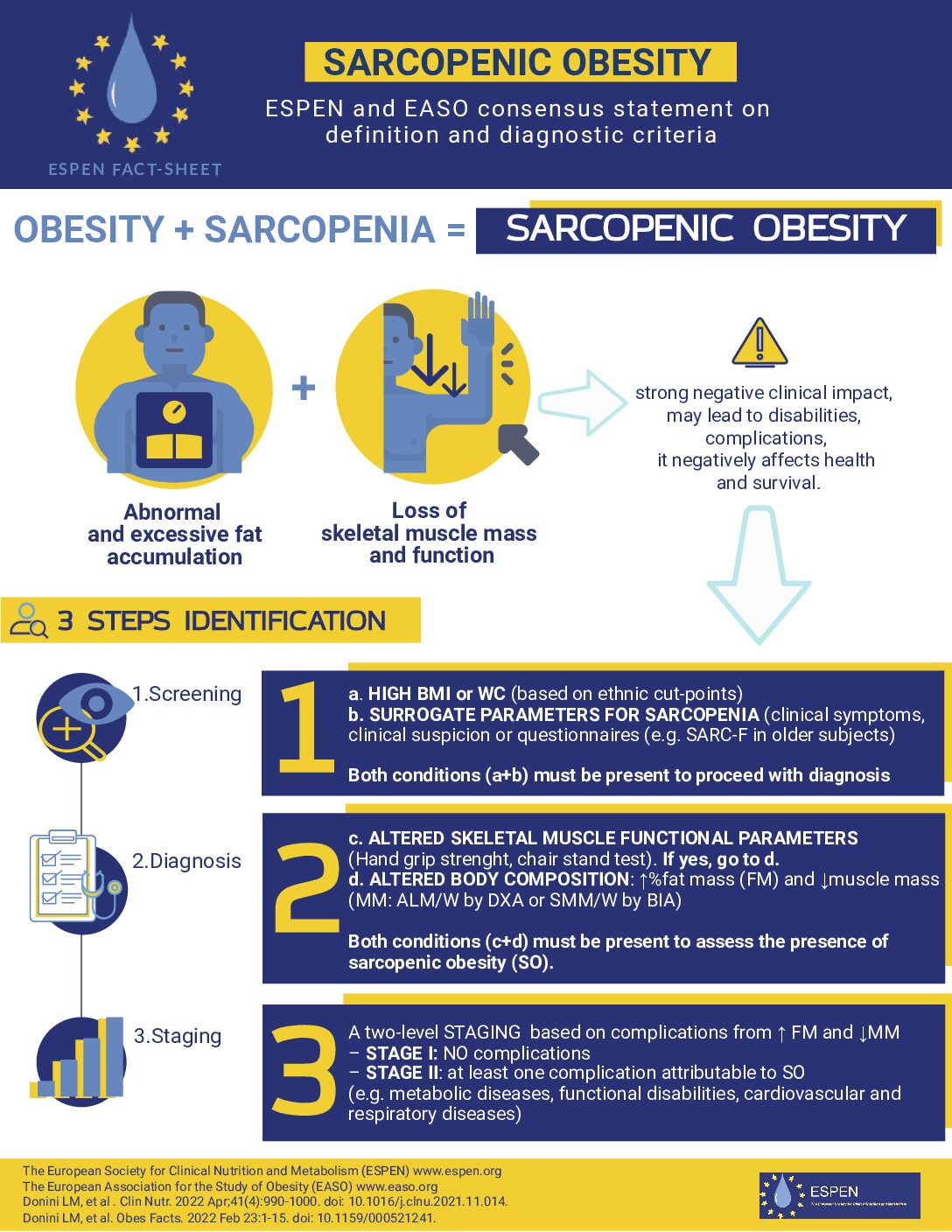Disease-associated malnutrition ranges from sarcopenic obesity to tumour cachexia, and is a complex phenomenon that impacts the health and quality of life of patients. Related to chronic or acute diseases, as well as to the presence of tumours, it represents a relevant clinical challenge due to its influence on the course of diseases and response to treatment.
The definition of malnutrition according to Marinos Elia focuses on the deficiency of energy, protein and nutrients, having measurable effects on the composition and functionality of the body.
Malnutrition has adverse repercussions on the progression of various diseases, including cancer, increasing the risk of general complications and prolonging hospital stay in patients with inadequate nutritional status.
Sarcopenic obesity, a combination of obesity and muscle wasting, is receiving increased attention in medicine, showing metabolic and functional complications associated with cardiovascular disease, type 2 diabetes and physical disability.
Tumour cachexia, a multifactorial syndrome affecting patients with advanced cancer, manifests in progressive phases: pre-cachexia, cachexia and refractory cachexia, with significant weight loss, extreme weakness and impaired quality of life.
The management of tumour cachexia involves multidisciplinary strategies, such as nutrition and dietary support, tailored exercise programmes, pharmacological therapy, psychological support and specific treatment for the underlying cancer.
The GLIM criteria are central to the diagnosis of disease-related malnutrition, including assessment of weight loss, dietary intake, disease symptoms affecting nutrition and changes in body composition.
These criteria are divided into two phases: screening for nutritional risk using validated tools and diagnosis based on parameters such as body mass index (BMI), weight loss and fat-free mass, allowing early identification and management of this condition to improve patients’ quality of life.
In summary, disease-linked malnutrition, which includes sarcopenic obesity and tumour cachexia, poses significant clinical challenges that require a comprehensive assessment and a multidisciplinary approach to management. The use of GLIM criteria aids in the early identification and management of this condition, highlighting the importance of continued research to develop effective prevention and treatment strategies.



